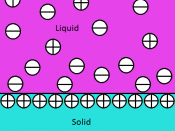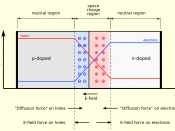What Is Electricity?
You use it every day, but what exactly is electricity? To understand it, we must go down to the very building blocks of matter itself: the atom. Without getting too complicated (and going down to the level of quantum mechanics), matter is comprised of atoms. Atoms are made up of three basic particles: protons, which are positively-charged particles; electrons, which are negatively-charged particles; and neutrons, which have no charge. An atom has its neutrons and protons clustered together at its center, called the nucleus, while the electrons orbit around the nucleus.
Electrons are negatively-charged, and protons positively-charged. In a stable substance, therefore, the charges balance out and the item comprised of that substance will have no net charge. This is why an item at rest will not spontaneously generate electricity: it is stable. Neutrons and protons normally remain static within the nucleus of most (non-radioactive) substances. Electrons, on the other hand, can easily be removed from atoms and can move between those atoms and adjacent ones.
This is most readily observable through the phenomenon of static electricity. In the classic experiment that you can do at home, a balloon is is rubbed on a child's head. When this is done, electrons are stripped from atoms in the hair, and moved to the balloon (or is it the other way around? :^) ). Once the two are separated, one is left with a positive charge and the other with a negative charge. Iif the balloon is then moved near that child's head again, the hair will stick up as the remaining, charged atoms are attracted to those in the balloon.
What causes electrons to move? It is two things: first, the attraction of the negatively-charged electrons towards a positive charge; and second, a means of allowing the electrons...



Where's the rest of this paper?
Where is the rest of the paper? It seems as if you cut off right in the middle of a paragraph. Maybe, you should edit it or something and resubmit it.
0 out of 0 people found this comment useful.